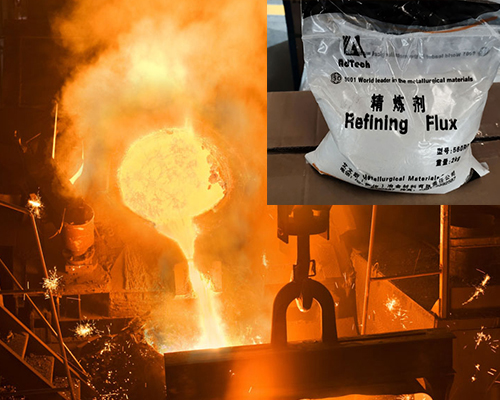The fluxes for aluminum cans recycling uniformly enter the lower layer of aluminum through the powder-carrying refining tank under the action of carrier gas (N or Ar). Through physical and chemical changes, many small bubbles are formed in the molten aluminum to completely contact the molten aluminum, and the molten aluminum is separated.
Some substances contained in the aluminum casting flux will strongly absorb and melt the oxides and suspended solids in the melt and attach them to the bubbles. As the bubbles rise, they are brought to the surface of the molten aluminum to achieve the purpose of degassing and slag removal.
The degassing and slag removal effect of fluxes is good. The refining deposits sprayed to the bottom of the melting pool and the bottom of the furnace undergo physical and chemical reactions, which can melt the alumina and separate the slag from the aluminum.
Bring the gas to the surface of the molten aluminum to keep the bottom of the furnace clean, greatly reducing the number of cleaning furnaces, improving the utilization rate of the furnace, and reducing labor intensity.
The separated oxides and impurities are removed from the melt while degassing. The resulting slag is dry and easily separated from the metal.
Fluxes for aluminum cans recycling improve the utilization rate of metal, reduce the adhesion of slag on the furnace wall, the furnace is easy to clean and repair, and improve the working environment.
EEG collects 5,629 kilograms of aluminum cans and sends them to local industries for recycling, thereby diverting this easily recyclable commodity from the landfill.
Since the start of the can collection campaign in 1997, EEG has collected 351,150 kilograms of aluminum cans for recycling. This is EEG’s first community-based annual recycling program. This directly helped reduce 5,271 tons of carbon dioxide in the atmosphere, saved 8,524 cubic meters of landfill space, and saved 79.917 billion BTU of energy.

